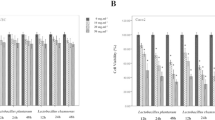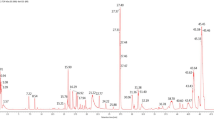Abstract
Introduction
Cancer is the uncontrolled division of cells and can be caused by genetic or environmental factors. Pancreatic cancer is one of the deadliest among all cancers. The role of bacteria as an anticancer agent dates back to almost 100 years ago. The microbiome has recently become a focus of research in carcinogenesis and even pancreatic cancer. Shigella flexneri is a gram-negative bacterium, which causes shigellosis with symptoms such as diarrhea, fever, and stomach cramps in human. Shigella flexneri may play a very important role in the internal pathways of apoptosis and may induce apoptosis in some of the cancerous cells.
Material and Methods
In this experiment bacteria were cultured on Salmonella-Shigella agar, then inoculated into BHI Broth medium. After sonication, the protein concentration of the bacterium was measured by using the ZellBio Sensitive Protein Bradford Assay kit. MTT assay was performed to obtain IC50 for the said bacterial protein. Later by cDNA kit synthesized the cDNA based on the RNA template. In the end, the results were analyzed using real-time PCR and the expression of Bax and Bcl-2 genes was measured before and after treatment.
Results
The results showed that Shigella flexneri has the potential anti-proliferative effect in pancreatic cancer. The inhibitory concentration, pro-apoptotic amount to upregulate Bax, and meanwhile also to downregulate the bcl-2 found to be 10 μl.
Conclusion
In general, due to defects in the apoptotic pathway in cancer cells and the existence of drug-resistant cells, the detection of new apoptotic inducers such as Shigella flexneri cell extract can be used for further studies on cancer therapy.






Similar content being viewed by others
References
Torre LA, Siegel RL, Ward EM, Jemal A. Global cancer incidence and mortality rates and trends—an update. Cancer Epidemiol Biomark Prev. 2016;25(1):16–27. https://doi.org/10.1158/1055-9965.EPI-15-0578.
Wu S, Zhu W, Thompson P, Hannun YA. Evaluating intrinsic and non-intrinsic cancer risk factors. Nat Commun. 2018;9(1):1–12. https://doi.org/10.1038/s41467-018-05467-z.
Omrani-Navai V, Alizadeh-Navaei R, Yahyapour Y, Hedayatizadeh-Omran A, Abediankenari S, Janbabaei G, et al. Human papillomavirus and gastrointestinal cancer in Iranian population: a systematic review and meta-analysis. Caspian J Intern Med. 2017;8(2):67–85. https://doi.org/10.22088/cjim.8.2.67.
Kamisawa T, Wood LD, Itoi T, Takaori K. Pancreatic cancer. Lancet. 2016;388(10039):73–85.
Zhou Q, Melton DA. Pancreas regeneration. Nature. 2018;557(7705):351–8. https://doi.org/10.1038/s41586-018-0088-0.
Kiraz Y, Adan A, Yandim MK, et al. Major apoptotic mechanisms and genes involved in apoptosis. Tumor Biol. 2016;37(7):8471–86. https://doi.org/10.1007/s13277-016-5035-9.
Forbes NS. Engineering the perfect (bacterial) cancer therapy. Nat Rev Cancer. 2010;10(11):785–94. https://doi.org/10.1038/nrc2934.
Dai H, Meng XW, Kaufmann SH. BCL2 family, mitochondrial apoptosis, and beyond. Cancer Transl Med. 2016;2(1):7. https://doi.org/10.4103/2395-3977.177558.
Friedrich A, Pechstein J, Berens C, Lührmann A. Modulation of host cell apoptotic pathways by intracellular pathogens. Curr Opin Microbiol. 2017;35:88–99. https://doi.org/10.1016/j.mib.2017.03.001.
Khodavirdipour A, Zandi M, Khodavirdipour A, Khayyam N. To study in vitro anti-proliferative and pro-apoptotic properties of Salmonella typhi in human pancreatic cancer cell line. Avicenna J Clin Microbiol Infect. 2019;6(3):77–82, 1-6. https://doi.org/10.34172/ajcmi.2019.13.
Ranjan A, Iwakuma T. Non-canonical cell death induced by p53. Int J Mol Sci. 2016;17(12):2068. https://doi.org/10.3390/ijms17122068.
Suzuki S, Franchi L, He Y. Shigella type III secretion protein MxiI is recognized by Naip2 to induce Nlrc4 inflammasome activation independently of Pkcδ. PLoS Pathog. 2014;10(2):e1003926. https://doi.org/10.1371/journal.ppat.1003926.
Figueira R, Holden DW. Functions of the Salmonella pathogenicity island 2 (SPI-2) type III secretion system effectors. Microbiology. 2012;158(5):1147–61. https://doi.org/10.1099/mic.0.058115-0.
Faherty CS, Merrell DS, Semino-Mora C, Dubois A, Ramaswamy AV, Maurelli AT. Microarray analysis of Shigella flexneri-infected epithelial cells identifies host factors important for apoptosis inhibition. BMC Genomics. 2010;11:272. https://doi.org/10.1186/1471-2164-11-272.
Hotchkiss RS, Monneret G, Payen D. Sepsis-induced immunosuppression: from cellular dysfunctions to immunotherapy. Nat Rev Immunol. 2013;13(12):862–74. https://doi.org/10.1038/nri3552.
Sabzehali F, Azimi H, Goudarzi M. Bacteria as a vehicle in cancer therapy and drug delivery. J Paramed Sci. 2017;8(1):52–9.
Galmbacher K, Heisig M, Hotz C, Wischhusen J, Galmiche A, Bergmann B, et al. Shigella mediated depletion of macrophages in a murine breast cancer model is associated with tumor regression. PLoS One. 2010;5(3):e9572.
Wang Y, Yang G, You L, Yang J, Feng M, Qiu J, et al. Role of the microbiome in occurrence, development and treatment of pancreatic cancer. Mol Cancer. 2019;18(1):1–13.
Author information
Authors and Affiliations
Corresponding author
Ethics declarations
Conflict of Interest
The authors declare that they have no conflict of interest.
Additional information
Publisher’s Note
Springer Nature remains neutral with regard to jurisdictional claims in published maps and institutional affiliations.
Rights and permissions
About this article
Cite this article
Khodavirdipour, A., Jamshidi, F., Nejad, H.R. et al. To Study the Anti-cancer Effects of Shigella Flexneri in AspC-1 Pancreatic Cancer Cell Line in Approach to Bax and bcl-2 Genes. J Gastrointest Canc 52, 593–599 (2021). https://doi.org/10.1007/s12029-020-00433-9
Published:
Issue Date:
DOI: https://doi.org/10.1007/s12029-020-00433-9




